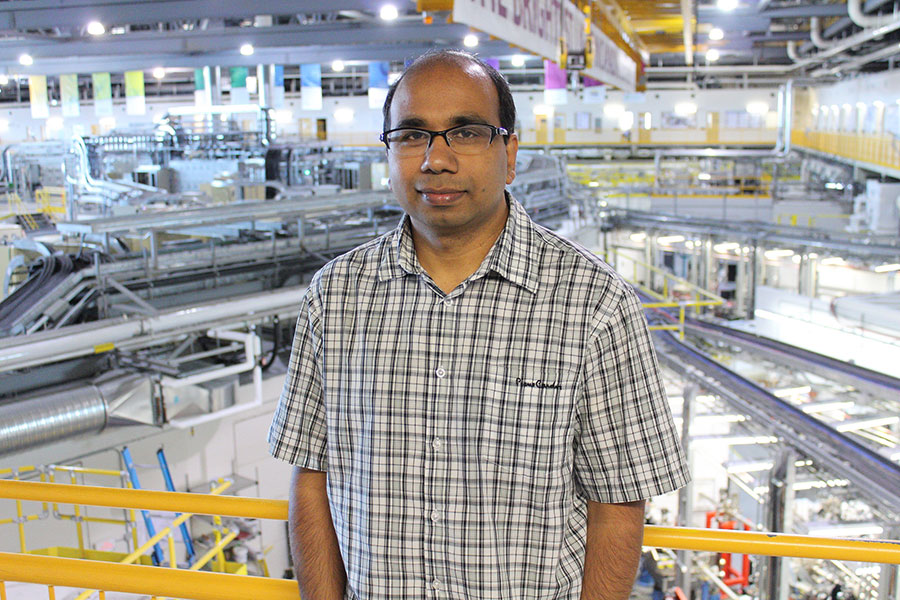Tracking breast cancer before it grows
A team of scientists led by University of Saskatchewan researcher Saroj Kumar is using cutting-edge Canadian Light Source techniques to screen and treat breast cancer at its earliest changes.
By University Communications Kumar's work focuses on a type of cells that play important role in cancer progression, known as fibroblasts. What role fibroblasts play, and how specifically they affect cancer's growth, is unclear, but they could hold key applications in early cancer detection and treatment.
Kumar's work focuses on a type of cells that play important role in cancer progression, known as fibroblasts. What role fibroblasts play, and how specifically they affect cancer's growth, is unclear, but they could hold key applications in early cancer detection and treatment."By using infrared (mid-IR beamline) one can detect chemical changes in the very early stages, before there are any morphological changes," says Kumar. Hopefully, this would make it possible to detect breast cancer well before it started to physically grow or metastatize.
Over the last six months, Kumar and his collaborators have shown the clear advantages of using non-invasive infrared imaging to detect both breast and skin cancers. Because of the brightness of synchrotron light, their technique makes it possible to map chemical information across thousands or millions of cells without altering the body's cells in any way.
Infrared imaging could not only make it possible to screen for cancer in its infancy, but to predict possible drug treatment response on a patient-by-patient basis.
"Generally there are several chemotherapy drugs, and right now there is no specific tool that says this chemotherapy drug will be efficient for this person but less for that person," says Kumar. "We could potentially use this method to see person-sensitive responses to the treatment."
Kumar is a CIHR-THRUST fellow and an initial grant of this project was given by the CLS. Recently, Kumar was awarded with the prestigious Swedish grant "VINNOVA: Mobility for growth" to start as a project leader at Uppsala University, Sweden, in collaboration with the CLS.
For more information, or to watch video of Saroj Kumar talk about the Mid-IR Breast Cancer Research Initiative, visit the CLS online.

